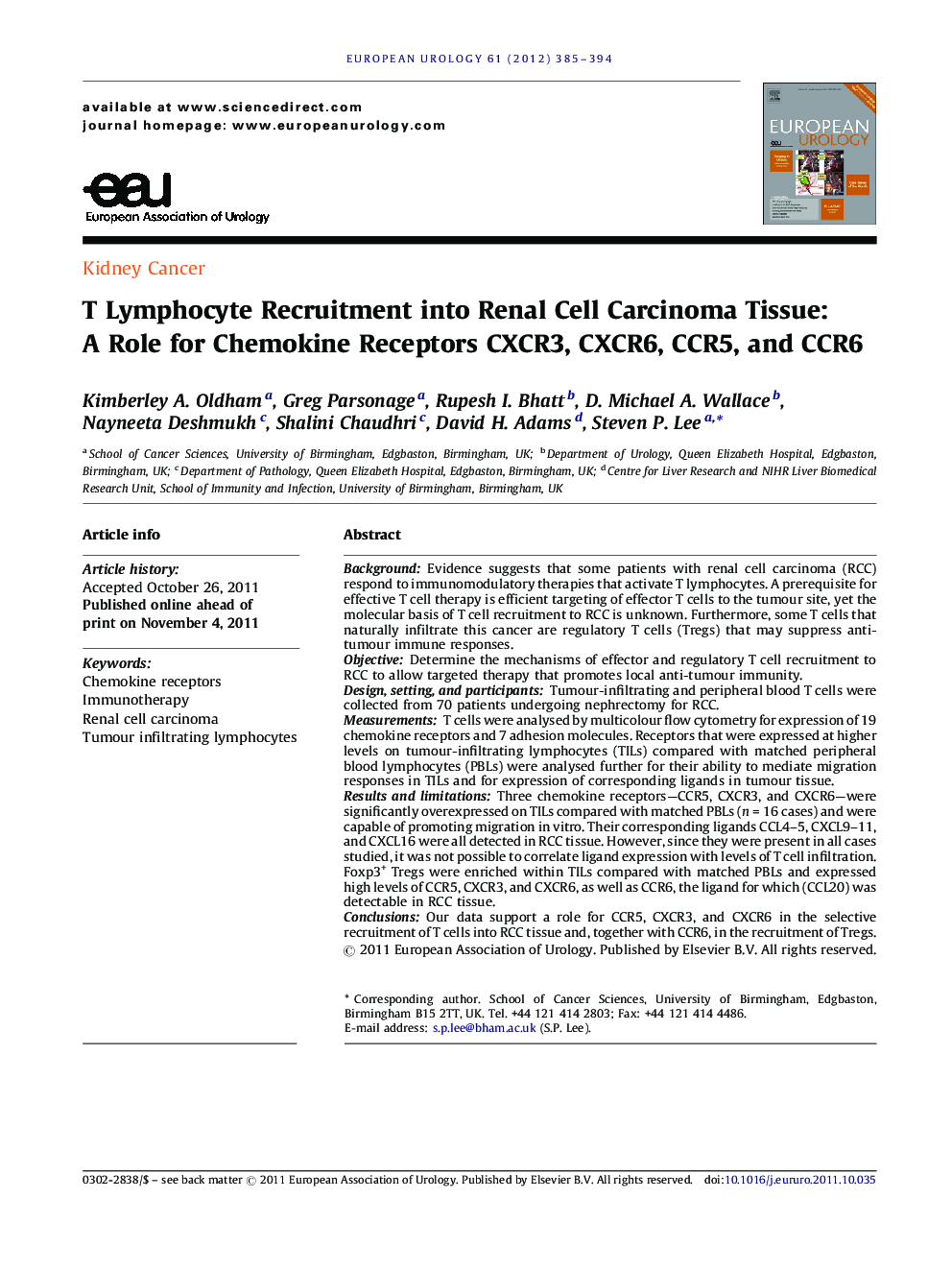| کد مقاله | کد نشریه | سال انتشار | مقاله انگلیسی | نسخه تمام متن |
|---|---|---|---|---|
| 3924164 | 1253093 | 2012 | 10 صفحه PDF | دانلود رایگان |

BackgroundEvidence suggests that some patients with renal cell carcinoma (RCC) respond to immunomodulatory therapies that activate T lymphocytes. A prerequisite for effective T cell therapy is efficient targeting of effector T cells to the tumour site, yet the molecular basis of T cell recruitment to RCC is unknown. Furthermore, some T cells that naturally infiltrate this cancer are regulatory T cells (Tregs) that may suppress antitumour immune responses.ObjectiveDetermine the mechanisms of effector and regulatory T cell recruitment to RCC to allow targeted therapy that promotes local anti-tumour immunity.Design, setting, and participantsTumour-infiltrating and peripheral blood T cells were collected from 70 patients undergoing nephrectomy for RCC.MeasurementsT cells were analysed by multicolour flow cytometry for expression of 19 chemokine receptors and 7 adhesion molecules. Receptors that were expressed at higher levels on tumour-infiltrating lymphocytes (TILs) compared with matched peripheral blood lymphocytes (PBLs) were analysed further for their ability to mediate migration responses in TILs and for expression of corresponding ligands in tumour tissue.Results and limitationsThree chemokine receptors—CCR5, CXCR3, and CXCR6—were significantly overexpressed on TILs compared with matched PBLs (n = 16 cases) and were capable of promoting migration in vitro. Their corresponding ligands CCL4–5, CXCL9–11, and CXCL16 were all detected in RCC tissue. However, since they were present in all cases studied, it was not possible to correlate ligand expression with levels of T cell infiltration. Foxp3+ Tregs were enriched within TILs compared with matched PBLs and expressed high levels of CCR5, CXCR3, and CXCR6, as well as CCR6, the ligand for which (CCL20) was detectable in RCC tissue.ConclusionsOur data support a role for CCR5, CXCR3, and CXCR6 in the selective recruitment of T cells into RCC tissue and, together with CCR6, in the recruitment of Tregs.
Journal: European Urology - Volume 61, Issue 2, February 2012, Pages 385–394